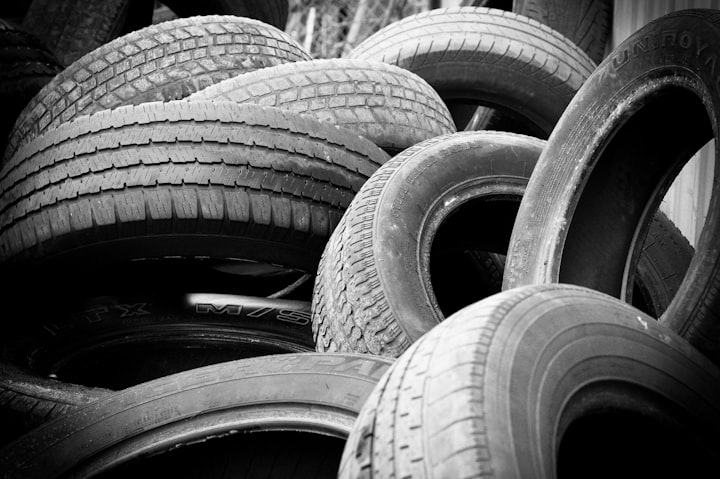How to Determine if Your Tires Need Replacement?
Signs that Your Vehicle Needs Tire Replacement

Regularly checking your tires is an essential aspect of vehicle maintenance that you should pay attention to. Your tires are crucial in ensuring your safety on the road, as they are the only contact point between your vehicle and the surface you are driving on. Proactively monitoring your tires' condition can prevent potential issues and ensure optimal performance.
But how do you know if it’s time to replace the car or truck tires and keep yourself safe from unexpected blowouts or other major accidents? We’ve got some tips on tire maintenance that'll help keep your vehicle running like new for years to come.
Checking Tread Depth: The Penny Test
Checking the tread depth of your tires is essential to maintaining safe driving conditions. One popular method for checking tire tread depth is known as the Penny Test. This simple yet effective test lets you determine if your tires have reached the minimum tread depth required for safe driving.
To perform the Penny Test, insert a penny into the grooves of your tire with Lincoln's head facing down. If you can see all of Lincoln's head, your tire tread depth has worn down to an unsafe level, and it is time to replace your tires. This test works because the distance between Lincoln's head and the edge of the penny is approximately 2/32 of an inch, which is the minimum legal tread depth in many countries. You still have adequate tire tread if the tread covers any part of Lincoln's head.
However, it is essential to note that while the penny test provides a quick and convenient way to check tire wear, it may not be as accurate as using a dedicated tire wear indicator tool or utilizing other professional methods. Tire wear can be uneven across different tire areas, so conducting multiple tests across various parts of each tire will provide a more comprehensive assessment.
Inspecting for Cracks and Bulges: Visual Inspection
Visual inspection identifies potential tire damage, such as cracks and bulges. By closely examining the tire's surface, particularly the sidewall, one can detect signs of wear and tear that may compromise its structural integrity. Tire cracks are small lines or fissures on the sidewall or tread.
They can occur due to various factors, including age, exposure to extreme temperatures, and improper maintenance. It is essential to carefully examine the entire sidewall surface for visible cracks, as even small cracks can indicate underlying structural weaknesses.
Bulges on tires, also known as bubbles or blisters, are raised areas on the tire's surface. They are typically caused by impacts with potholes or curbs, excessive heat buildup, or manufacturing defects. These bulges weaken the tire's structure and increase the risk of a blowout if left unattended. When inspecting for cracks and bulges during a visual inspection, it is essential to thoroughly examine all areas of the tire, including the sidewalls. Look for any irregularities in texture, color changes, or protrusions that may indicate potential damage.
Monitoring Uneven Wear Patterns: Tire Rotation and Alignment
Tire rotation and wheel alignment are crucial in ensuring the longevity and performance of your vehicle's tires. By monitoring uneven wear patterns, you can identify and address issues before they become more severe.
Tire rotation involves moving each tire from one position to another on your vehicle at regular intervals. This helps distribute the wear evenly across all tires, as front and rear tires tend to wear differently due to variations in weight distribution and driving conditions. By rotating the tires regularly, you can extend their lifespan and maximize their traction and handling capabilities.
On the other hand, wheel alignment refers to adjusting the angles of the wheels so that they are parallel to each other and perpendicular to the ground. Proper alignment ensures that all four wheels work harmoniously, minimizing unnecessary tire wear. When wheels are misaligned, it can lead to uneven tire wear patterns such as cupping or feathering.
Monitoring these uneven wear patterns is essential for maintaining optimal tire performance. Regularly inspecting your tires for signs of excessive or irregular tread wear is vital. Uneven tire tread wear indicators include:
- Worn edges
- Scalloped or cupped tread blocks
- Significant differences in tread depth between tires
If you notice any of these signs, it may indicate that your tire and wheel need rotation or alignment adjustment. Consulting a professional technician is recommended for accurate diagnosis and proper correction of any issues present.
Paying Attention to the Age and Mileage of Your Tires
Tire age recommendations are based on various factors, such as the type of tire, materials used, and environmental conditions. Replacing tires over six years old is generally recommended, regardless of their tread depth, because tires can deteriorate due to factors like exposure to sunlight, heat, and ozone over time.
Additionally, it's essential to be aware of the limitations of mileage warranties provided by tire manufacturers. Mileage warranties typically cover a certain number of miles driven before any defects or wear become apparent. However, these warranties often have limitations based on factors like proper maintenance and usage conditions.
Signs that Your Tires Are Impeding Vehicle Performance
Monitoring the condition of your tires is essential for maintaining optimal vehicle performance and safety. By paying attention to certain signs, you can determine if your tires are impeding your vehicle's performance.
- Reduced traction: If you notice that your vehicle is slipping or sliding on the road, especially in wet or snowy conditions, it could be a sign that your tires are worn and need to be replaced.
- Longer stopping distance: If it takes longer for your vehicle to come to a complete stop, it may be due to tires that have lost their grip. This can be especially dangerous in emergency braking situations.
- Vibration or shaking: If you feel a strong vibration or shaking coming from the steering wheel or throughout the vehicle, it may be a sign that your tires are out of balance or damaged.
- Increased fuel consumption: If you notice that your vehicle is consuming more fuel than usual, it could be due to underinflated tires. When your tires are underinflated, it creates more resistance on the road, causing your engine to work harder and use more fuel.
- Noisy ride: Excessive road noise from your tires could indicate tire wear or damage, such as a bulge, blister, or puncture. These issues can impact the overall performance and safety of your vehicle.
- Difficulty steering or handling: If you find it difficult to steer or control your vehicle, it may be due to worn or damaged tires. This can make it harder to make sharp turns or navigate corners, putting you at risk of losing control of your vehicle.
Never Ignore the Signs
By following these guidelines and regularly inspecting your tires for signs of wear and damage, you can ensure your vehicle remains safe on the road. Remember that replacing worn-out or damaged truck parts, not just tires, is crucial for optimal driving performance and safety. Prioritizing maintenance and paying attention to the overall condition of your vehicle's components, you can significantly reduce the risk of tire-related incidents and ensure a safer driving experience for yourself and others on the road.
About the Creator
Jen Demkin
Hi, I'm Jen from 4WheelOnline. My fascination with vehicles started in my childhood. I like cars more than dolls. I enjoy writing about automotive industry news, vehicle maintenance tips, and more.






Comments
There are no comments for this story
Be the first to respond and start the conversation.